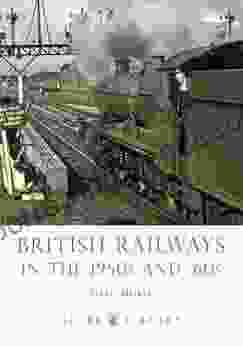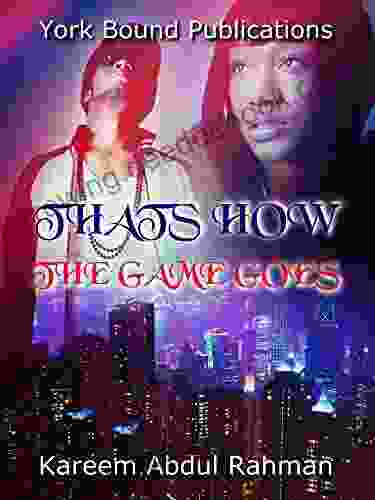British Railways in the 1950s and 60s: Shire Library 699

In the 1950s and 60s, British Railways was undergoing a period of significant change. The steam locomotives that had been the mainstay of the railway system for over a century were being replaced by diesel and electric locomotives. New lines were being built, and existing lines were being modernised. The railway system was also being integrated with other forms of transport, such as buses and coaches.
This period of change was driven by a number of factors. One factor was the increasing cost of coal, which was the fuel used by steam locomotives. Diesel and electric locomotives were more fuel-efficient than steam locomotives, and they could also be operated more cheaply.
4.3 out of 5
| Language | : | English |
| File size | : | 10260 KB |
| Text-to-Speech | : | Enabled |
| Screen Reader | : | Supported |
| Enhanced typesetting | : | Enabled |
| Word Wise | : | Enabled |
| Print length | : | 58 pages |
Another factor driving the change to diesel and electric locomotives was the need to improve the speed and reliability of the railway system. Steam locomotives were relatively slow and unreliable, and they were often delayed by factors such as bad weather and mechanical problems. Diesel and electric locomotives were faster and more reliable, and they were less likely to be delayed by these factors.
The change to diesel and electric locomotives also led to a number of changes in the way that British Railways operated. Steam locomotives required a large crew to operate them, and they had to be regularly serviced and maintained. Diesel and electric locomotives required a smaller crew to operate them, and they could be operated for longer periods without needing to be serviced or maintained.
The change to diesel and electric locomotives also had a significant impact on the appearance of the railway system. Steam locomotives were often painted in a dark green colour, and they had a distinctive shape. Diesel and electric locomotives were often painted in a brighter colour, and they had a more modern shape.
The change to diesel and electric locomotives was a major turning point in the history of British Railways. It marked the end of the steam era, and it ushered in a new era of modernisation and progress.
The End of Steam
The end of steam on British Railways was a gradual process. In the early 1950s, steam locomotives still accounted for over 90% of the traffic on the railway system. However, by the early 1960s, the number of steam locomotives in service had declined to less than 50%. The last steam locomotive to be built for British Railways was the Class 9F, which was introduced in 1954. The last steam locomotive to be withdrawn from service was the Class 5MT, which was withdrawn in 1968.
The end of steam on British Railways was a significant event. It marked the end of an era, and it ushered in a new era of modernisation and progress. However, the end of steam was also a sad event for many people. Steam locomotives had been a part of British life for over a century, and they were seen as a symbol of the country's industrial heritage.
The Rise of Diesel and Electric Locomotives
The rise of diesel and electric locomotives on British Railways was a direct result of the decline of steam locomotives. Diesel and electric locomotives were more fuel-efficient, more reliable, and faster than steam locomotives. They also required a smaller crew to operate them, and they could be operated for longer periods without needing to be serviced or maintained.
The first diesel locomotive to be introduced on British Railways was the Class 20, which was introduced in 1957. The first electric locomotive to be introduced on British Railways was the Class 70, which was introduced in 1960. By the early 1960s, diesel and electric locomotives were becoming the dominant form of traction on British Railways.
The rise of diesel and electric locomotives led to a number of changes in the way that British Railways operated. Diesel and electric locomotives could be used to haul heavier trains at faster speeds than steam locomotives. They could also be used to operate more frequent services. The of diesel and electric locomotives also led to a number of changes in the way that British Railways was organised. The railway system was divided into a number of regions, each of which was responsible for its own diesel and electric locomotive fleet.
New Lines and Modernisation
In the 1950s and 60s, British Railways also embarked on a major programme of new line construction and modernisation. The most significant new line to be built was the West Coast Main Line, which was completed in 1966. The West Coast Main Line was a major improvement over the existing line, and it significantly reduced the journey time between London and Glasgow.
In addition to building new lines, British Railways also модернизированные many of its existing lines. The most significant modernisation project was the electrification of the West Coast Main Line between London and Manchester. The electrification of the West Coast Main Line was a major success, and it led to a significant increase in the speed and frequency of services on the line.
Integration with Other Forms of Transport
In the 1950s and 60s, British Railways also began to integrate its services with other forms of transport. The most significant integration project was the development of the InterCity network. The InterCity network was a network of high-speed trains that connected the major cities in Britain. The InterCity network was a major success, and it significantly reduced the journey time between these cities.
In addition to the InterCity network, British Railways also developed a number of other integrated transport services. These services included the development of park and ride schemes, and the of combined rail and bus tickets.
The 1950s and 60s were a period of significant change for British Railways. The steam locomotives that had been the mainstay of the railway system for over a century were being replaced by diesel and electric locomotives. New lines were being built, and existing lines were being modernised. The railway system was also being integrated with other forms of transport, such as buses and coaches. These changes were driven by a number of factors, including the increasing cost of coal, the need to improve the speed and reliability of the railway system, and the need to integrate the railway system with other forms of transport.
The changes that took place in the 1950s and 60s had a significant impact on the way that British Railways operated. Diesel and electric locomotives were more fuel-efficient, more reliable, and faster than steam locomotives. They also required a smaller crew to operate them, and they could be operated for longer periods without needing to be serviced or maintained. The of diesel and electric locomotives led to a number of changes in the way that British Railways was organised. The railway system was divided into a number of regions, each of which was responsible for its own diesel and electric locomotive fleet.
The changes that took place in the 1950s and 60s also had a significant impact on the appearance of the railway system. Steam locomotives were often painted in a dark green colour, and they had a distinctive shape. Diesel and electric locomotives were often painted in a brighter colour, and they had a more modern shape.
The changes that took place in the 1950s and 60s were a major turning point in the history of British Railways. They marked the end of the steam era, and they ushered in a new era of modernisation and progress.
4.3 out of 5
| Language | : | English |
| File size | : | 10260 KB |
| Text-to-Speech | : | Enabled |
| Screen Reader | : | Supported |
| Enhanced typesetting | : | Enabled |
| Word Wise | : | Enabled |
| Print length | : | 58 pages |
Do you want to contribute by writing guest posts on this blog?
Please contact us and send us a resume of previous articles that you have written.
 Book
Book Novel
Novel Text
Text Genre
Genre Reader
Reader Paperback
Paperback E-book
E-book Magazine
Magazine Newspaper
Newspaper Paragraph
Paragraph Shelf
Shelf Glossary
Glossary Foreword
Foreword Preface
Preface Footnote
Footnote Codex
Codex Tome
Tome Library card
Library card Narrative
Narrative Biography
Biography Autobiography
Autobiography Memoir
Memoir Encyclopedia
Encyclopedia Dictionary
Dictionary Thesaurus
Thesaurus Narrator
Narrator Librarian
Librarian Catalog
Catalog Borrowing
Borrowing Study
Study Lending
Lending Reserve
Reserve Academic
Academic Rare Books
Rare Books Special Collections
Special Collections Literacy
Literacy Study Group
Study Group Storytelling
Storytelling Reading List
Reading List Theory
Theory Nicola Barber
Nicola Barber Jimmy L Bryan Jr
Jimmy L Bryan Jr Raymond A Serway
Raymond A Serway Trace Adkins
Trace Adkins D J Taylor
D J Taylor Terry Goodkind
Terry Goodkind Sue Mcdonagh
Sue Mcdonagh Laura Loomer
Laura Loomer John W Dettman
John W Dettman Katharine Kenah
Katharine Kenah Debra Lynn
Debra Lynn Salena Zito
Salena Zito Sandra Magsamen
Sandra Magsamen Kevin Bleyer
Kevin Bleyer David Bollier
David Bollier Marcia Thornton Jones
Marcia Thornton Jones Chris Luzniak
Chris Luzniak Marion Mutala
Marion Mutala Travis Wells
Travis Wells Course Hero
Course Hero
Light bulbAdvertise smarter! Our strategic ad space ensures maximum exposure. Reserve your spot today!
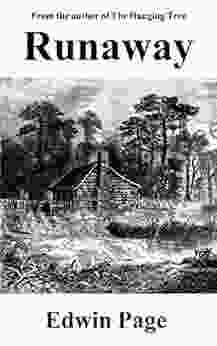
 J.R.R. TolkienThe Enigmatic Disappearance of Runaway Edwin Page: Uncovering the Mysteries...
J.R.R. TolkienThe Enigmatic Disappearance of Runaway Edwin Page: Uncovering the Mysteries...
 Douglas FosterThe Ultimate Study Guide to Fyodor Dostoevsky's The Brothers Karamazov: A...
Douglas FosterThe Ultimate Study Guide to Fyodor Dostoevsky's The Brothers Karamazov: A...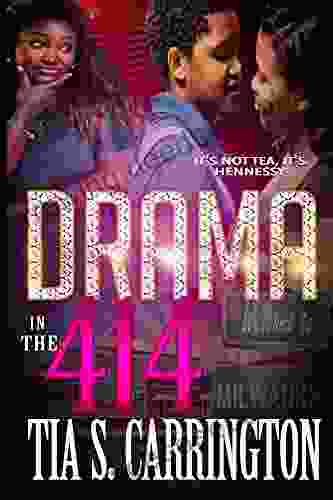
 Mark TwainIt Not Tea It Hennessy: Exploring the History and Cultural Impact of Hennessy...
Mark TwainIt Not Tea It Hennessy: Exploring the History and Cultural Impact of Hennessy... Aron CoxFollow ·9.1k
Aron CoxFollow ·9.1k Earl WilliamsFollow ·12.7k
Earl WilliamsFollow ·12.7k Douglas AdamsFollow ·7.8k
Douglas AdamsFollow ·7.8k Holden BellFollow ·4.4k
Holden BellFollow ·4.4k Devon MitchellFollow ·2.9k
Devon MitchellFollow ·2.9k Gabriel HayesFollow ·10.6k
Gabriel HayesFollow ·10.6k Dylan MitchellFollow ·15.7k
Dylan MitchellFollow ·15.7k Tyler NelsonFollow ·7.3k
Tyler NelsonFollow ·7.3k

 Darius Cox
Darius CoxThe Gathering Pacific Storm: An Epic Struggle Between...
The Gathering...

 Hugo Cox
Hugo CoxHow CIA-Contra Gangs and NGOs Manufacture, Mislabel, and...
In the annals of covert operations, the CIA's...

 Finn Cox
Finn CoxDr. Brandt's Billionaires Club Series: The Ultimate...
A Journey into the Pinnacle of...

 Isaac Asimov
Isaac AsimovCurrent Affairs Daily Digest 20180730 30th July 2024
National ...

 Felix Carter
Felix CarterBroadway Celebrates The Big Apple Over 100 Years Of Show...
Broadway Celebrates the Big Apple: Over 100...
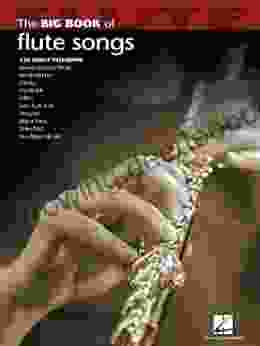
 Beau Carter
Beau CarterThe Big Book of Flute Solos: A Comprehensive Collection...
If you're a flute player,...
4.3 out of 5
| Language | : | English |
| File size | : | 10260 KB |
| Text-to-Speech | : | Enabled |
| Screen Reader | : | Supported |
| Enhanced typesetting | : | Enabled |
| Word Wise | : | Enabled |
| Print length | : | 58 pages |


